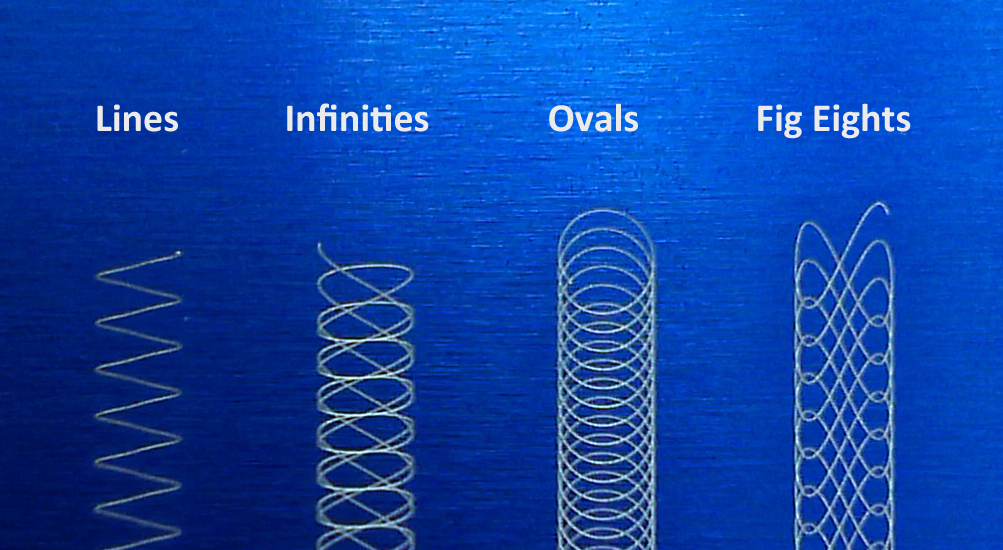Use Laser Wobble to Improve Welding, Cutting, Engraving & Marking
Booth Number Correction: BOOTH 4249 PHOTONICS WEST 2019, Feb 5-7, San Francisco
Polaris Laser Wobble Technology
Laser wobble has been added to Polaris Motion’s laser CNC toolbox. Some other tools include infinite field of view (IFOV), F-theta lens correction, and 3D laser micro machining. Visit us at Booth 4249 – Photonics Weat 2019 to find out more about these and other powerful techniques.
Laser wobble can be used to improve laser welding, cutting, engraving and marking.
The primary motion of the XYZ stage is superimposed with high frequency repetitive patterns such as lines, circles, figure eights and infinities by the GxGz Galvoscanner. With laser wobble higher quality weld fillets, wider cutting kerfs and thicker engraving and marking widths are possible. Adding a wobble pattern to a primary motion is easy to do using our software tools. Simply select one of the wobble patterns, size and frequency. Typical sizes are from hundreds of microns to millimeters and frequencies can be several hundred Hertz.

Welding
In laser welding, process development includes selecting the correct laser spot size, power and traverse speed. By using wobble-based laser welding, a smaller spot size may be selected having higher fluence and the effective size of the liquid weld pool is determined by the wobble dimensions and frequency. This added control leads to superior weld quality having:
- Improved weld cross section, maximizing contact between the workpieces
- Improved tolerance to gap variability and seam misalignment
- Improved ductility in the inter-metallic layer
- Ability to weld reflective materials (Al, Cu) and dissimilar metals by better fluence control
Simply put, wobble-based laser welding aids in achieving a more consistent bead and better control over weld power distribution.
Laser Cutting
Laser wobble can also improve cutting. The traditional method of laser cutting uses offsetting. With this method the cutting path is repeated, where the second, third, fourth paths etc… are created with an offset from previous paths. On each repeated cut, the material cools, hardens, oxidizes then heats up again. Material properties change and the remaining edge may become warped, rough and course.
By using laser wobble, the speed of the primary motion combined with wobble frequency and the selected wobble dimension improves the kerf width consistency and cut quality due to the single pass. Processes and industries that demand higher quality as in silicon wafer processing and mobile device manufacturing prefer to use laser wobble for cutting.
Marking & Etching
Marking and etching can also take advantage of laser wobble. In traditional laser marking, thicker lettering is achieved by making an outline and hatching the interior. Wobble is an alternative technique that can achieve higher marking speeds and provide greater control over the lettering weight.
Etching can benefit from laser wobble by employing constant wobble frequencies for material removal. Beautiful repetitive patterns for knurling are possible.
To obtain more detailed information, you may download our 32 page general catalog (5MB) here, visit our website or give us a phone call at +1-866-548-5639. Our time zone is PST.
Mile Erlic
Polaris Motion
www.pmdi.com
merlic@pmdi.com

